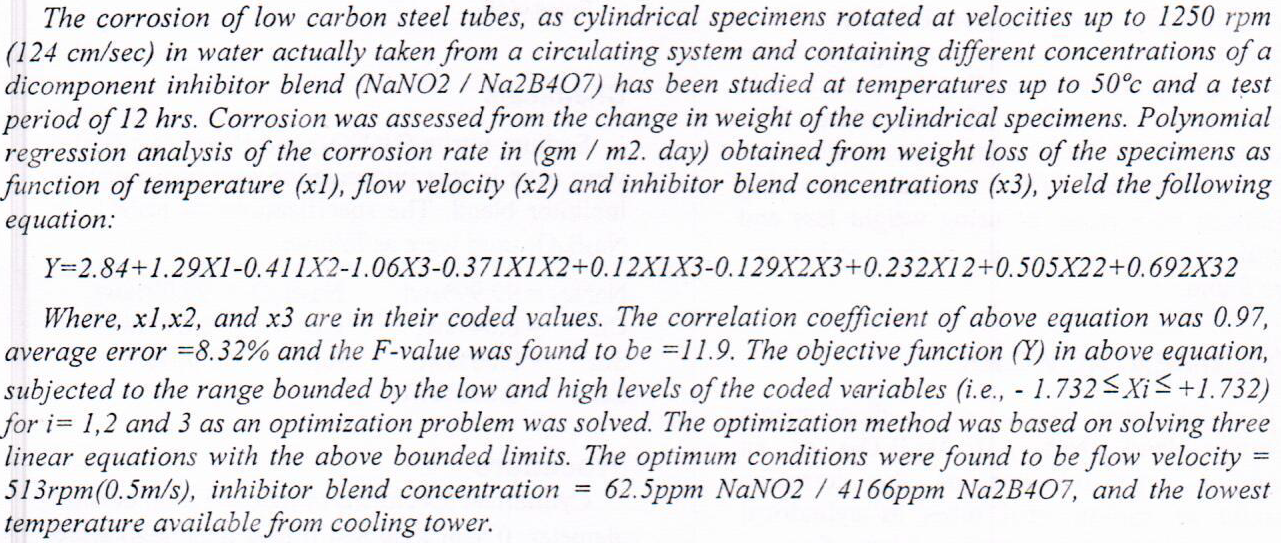
In this work pyrazolin derivatives were prepared from the diazonium chloride salt of 4-aminobenzoic acid. Azo compounds were prepared from the reaction of an ethanolic solution of sodium acetate and calculated amount of active methylene compound namely, acetyl acetone to obtain the corresponding hydrazono derivative (1). Cyclocondensation reaction of compounds (1) with hydrazine hydrate and phenyl hydrazine in boiling ethanol affording the corresponding pyrazoline-5-one derivatives of 4-aminobenzoic acid (2,3). Then compound (3) was reacted with thionyl chloride to give the corresponding acid chloride derivative(4), followed by conversion into the corresponding acid hydrazide derivative (5) carboxylic acid thiosemicarbazide (11), esters
... Show MoreThe paper presents the design of a system consisting of a solar panel with Single Input/Multiple Outputs (DC-DC) Buck Converter by using Simulink dialogue box tools in MATLAB software package for simulation the system. Maximum Power Point Tracking (MPPT) technique depending on Perturb and Observe (P&O) algorithm is used to control the output power of the converter and increase the efficiency of the system. The characteristics of the MSX-60 PV module is chosen in design of the system, whereas the electrical characteristics (P-V, I-V and P-I curves) for the module are achieved, that is affected by the solar radiation and temperature variations. The proposed design module has been found to be stable for any change in atmospheric tempera
... Show More (2)
(2)
This research is carried out to investigate the behavior of self-compacting concrete (SCC) two-way slabs with central square opening under uniformly distributed loads. The experimental part of this research is based on casting and testing six SCC simply supported square slabs having the same dimentions and reinforcement. One of these slabs was cast without opening as a control slab. While, the other five slabs having opening ratios (OR) of 2.78%, 6.25%, 11.11%, 17.36% and 25.00%. From the experimental results it is found that the maximum percentage decrease in cracking and ultimate uniform loads were 31.82% and 12.17% compared to control slab for opening ratios (OR
... Show MoreAbstract: Aluminum alloys grade 6061-T6 are characterized by their excellent properties and processing characteristics which make them ideal for varieties of industrial applications under cyclic loading, aluminum alloys show less fatigue life than steel alloys of similar strength. In the current study, a nanosecond fiber laser of maximum pulse energy up to 9.9 mJ was used to apply laser shock peening process (LSP) on aluminum thin sheets to introduce residual stresses in order to enhance fatigue life under cyclic loading Box-Behnken design (BBD) based on the design of experiments (DOE) was employed in this study for experimental design data analysis, model building and optimization The effect of working parameters spot size (ω), scannin
... Show MoreObjective: To compare two positioning approaches in the surgical treatment of unstable intertrochanteric femoral fractures fixed by proximal femoral nailing, the supine versus lateral decubitus position Methodology: This randomized prospective comparative study on 26 patients with unstable intertrochanteric fractures was carried out from January 2020 and June 2022. We randomly divided patients into two groups: group A (13 patients) were operated using the traction table in the supine position for implant insertion, and group B (13 patients) were operated using the lateral decubitus position. We compared both groups regarding the setup time, operative time, tip-to-apex distance, collodiaphyseal angle, time for fluoroscopic time expo
... Show More (1)
(1)
The economic units always sought to maintain its market position and Trchinh the technology management and modern methods that will support success factors .vdila about it has become a customer and one profitability analysis of the most practical way benefit of economic units as modern management focus their attention on achieving this satisfaction, as the customers make up the axis of the success of every organization and that there are many government units aiming to profit directs attention to customers and the number of these units increased continuously. The administration used the customer profitability analysis in order to obtain information to assist in making and decision-making process. How to use modern tec
... Show MorePreparation of identical independent photons is the core of many quantum applications such as entanglement swapping and entangling process. In this work, Hong-Ou-Mandel experiment was performed to evaluate the degree of indistinguishability between independent photons generated from two independent weak coherent sources working at 640 nm. The visibility was 46%, close to the theoretical limit of 50%. The implemented setup can be adopted in quantum key distribution experiments carried out with free space as the channel link, as all the devices and components used are operative in the visible range of the electromagnetic spectrum.
 (1)
(1)
 (1)
(1)
The reaction of methyldopa with o-vanillin in refluxing ethanol afforded Schiff base and characterized through physical analysis with a number of spectra also the study of biological activity. The geometry of the Schiff base was identified through using (C.H.N) analysis, Mass, 1H-NMR, FT-IR, UV-Vis spectroscopy. Metal complexes of Cr3+, Mn2+, Co2+, Ni2+, Cu2+, Zn2+, Cd2+ and Hg2+ with Schiff base have been prepared in the molar ratio 2:1 (Metal:L), (L = Schiff base ligand) except Hg2+ at molar ratio 1:1 (Hg:L). The prepared complexes were characterized by using Mass, FT-IR and UV-Vis spectral studies, on other than magnetic properties and flame atomic absorption, conductivity measurements. According to the results a dinuclear octahedral geo
... Show More (29)
(29)
 (10)
(10)
